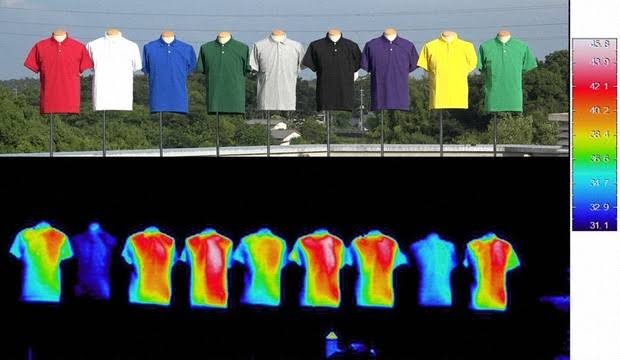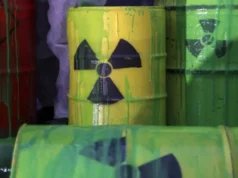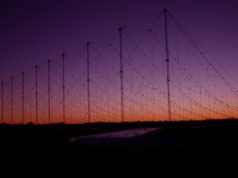Worse than black? study on heat-beating shirt colors reveals infrared absorbers

In this photo provided by the National Institute for Environmental Studies, polo shirts are seen out in the sun during an experiment to determine differing surface temperatures depending on color. From left, the nine colors are red, white, blue, dark green, gray, black, purple, yellow, and green.
– It’s a common bit of summer wisdom that you’ll get even hotter in the sun if you dress in black. But as temperatures have continued their upwards march in recent years, it’s been noticed that it’s not just black that can get you feeling hot under the collar. So, what color is best for keeping cool, or at least cooler, in the sweltering season?
Earth is on the receiving end of radiant energy from the sun, and how much of that energy is reflected by something on our planet changes depending on what color it is. The radiant energy that isn’t reflected is absorbed and becomes heat, which means that colors with low reflectivity like black get hot easily, and highly reflective ones stay cooler.
Toshiaki Ichinose, executive senior research scientist at the National Institute for Environmental Studies in Tsukuba, Ibaraki Prefecture is investigating the link between heat and clothing colors. He says there is a color that’s “quite close to black.”
In a 2019 experiment, Ichinose and his research team set polo shirts in nine colors up under the sun outside, and used a thermographic camera to measure how hot they got in around five minutes. The results showed that the color that stayed coolest was white, followed by yellow, gray, red, purple, blue, green, dark green, and black. The surfaces of the white and yellow shirts hovered around 30 degrees Celsius, but many parts of the black and dark green shirts topped 45 C.
But the experiment yielded one quite unexpected result. Near infrared light — just out of range to the human eye — makes up a significant portion of the radiant energy that reaches Earth’s surface. And examining that light, the researchers found that not black but dark green absorbed the most infrared, at 87%. Black absorbed 86% of the infrared that struck it, while white proved the least absorptive, at 63%.
“It’s likely that the results will vary somewhat depending on the dye used to color a piece of clothing, but after expanding our study to invisible near infrared light, we discovered that green is quite close to black. You could say that these two colors are in the same group,” Ichinose said.
So what color should we wear to stay as cool as we can during these extreme heat days? As you might expect, Ichinose recommends white, yellow, gray and red, and avoiding black, dark green, green, blue and purple duds for log days under the sun.
“I’d like people to remember the results of our study when thinking about what to wear to go outside,” Ichinose said.



